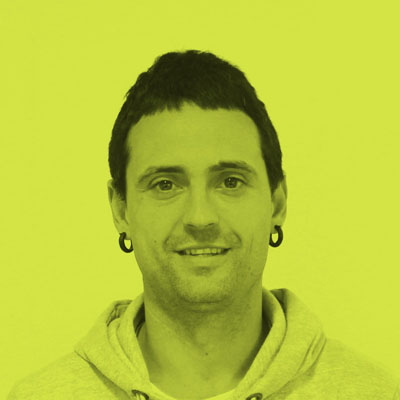Lots of interesting things at PloneConf 2011 SF
One of the interesting keynotes of Day 2 at PloneConf was that from P.J. Onori. Not himself a Plone developer, but someone with great experience in web applications. The main point, improve communication between developers and designers. If each team understands its function, things will come easy. Let's understand the viewpoints of other co-workers in the process of website creation.
At the same time, developers should think not only on code, but on the user experience. Not only designers must understand usability principles. Developers must also be active in that process too.
State of Plone
This keynote is a yearly occasion in every PloneConf. Creators of Plone gave us a perspective of the evolution of the platform, and this year this came from Alex Limi and Calvin Hendryx-Parker
Beginner mistakes, experts failures
Then came Alan Runyan, another of the founding fathers of Plone, and he stressed two points in his talk: which things you should avoid when beggining with Plone, and, on the other hand, things that expert tend to do and perhaps they shouldn't. Very insightful.
Killer Worfklow Apps
This presentation was centered on Intranets. The example was one from a given university, in which the developers have used 3 new products: plone.app.workflowmanager (shows the workflow and lets you edit it in a graphic way), uwosh.pfg.d2c (a way to create elements from PloneFormGen forms) and collective.pfg.dexterity (from PloneFormGen forms ypu created Dexterity-type objects).

How Plone's Security Works
Matthew Wilkes has explained how the taskforce in charge of Plone and Zope security works. How holes and bugs are detected, reported, and fixed with due agility. Impressive work, Plone security seems very strong.
Plone in Windows
Despite the availability of Windows installer for Plone, people don't seem to be happy with it. So, the creator of the installer has made a practical demo, and there has also been discussion about issues with other installers across all platforms.
Windows AutoAuthentication
Matt Hamilton, head of NetSight, has shown us how to autentify into Plone with Windows. Thus, users of ActiveDirectory can log into Plone using Internet Explorer or FireFox.
Recurrent widget
A demo of the ploner.formwidget.recurrence product by Lennart Regebro. It lets you create automatically new Plone events that occur repeatedly.
Hector Velarde
The mexican developer Hector Velarde from the Plone foundation, has shown us a product they are developing for a TV station. We know Velarde from PloneConf in Naples and we like his approach, small and useful Plone products. We think CodeSyntax can collaborate with him along several lines, particularly news-items in Plone... We'll see.
Testing for pragmatic people
The aim of the talk from Michael Davis has been to stress the importance of software testing, but with a practical point of view. No need to lose your temper to reach a 100% tested status. Focus on the essential, and that may be good enough.
Potential Plone Clients: how to seal the deal
Calvin Hendryx-Parker from Six Feet Up has shown us their techniques to sell Plone sites to customers. Shortly: avoid difficult wording and be truthful.
Mistakes Made and Lessons Learnt scaling Plone after launch
The two Matts from Netsight have shownus ten optimisation procedures that they implemented after launching a website. Some of them were related to Zope catalogues, others to mistakes made during software desing. Interesting clues for us.
ZODB Tip and Tricks
Carlos de la Guardia gave us tips and tricks for applications built upon ZODB. For instance, how to extend the cache of ZODB and ZEO, products to create reports, ways to analyze the status of objects...
Transmogrification: behind the Magic Box
Chris Ewing's speech has been clear and elegant. In a new website, a migration had to be made from Liferay, so they used transmogrifier to import all that content into Plone. The new site is much better, of course.
Content creation tool for Plone
Matt from Netsight has shown us a tool that let's you escape from Lorem ipsum dummy text while filling content into Plone portals. Content is inserted into the site, and connections between pages are also automatically created. Great way to test a site.
Ptah project
Alan Runyan has shown this tool, kinda Django app for the Pyramid framework.
The new ZEA
Rob Gietema has explained the works of ZEA, the European association of companies working with Plone and Zope. We, CodeSyntax, are proud membersa of ZEA, of course :)
Communes Plone
Joel Labrillote from Communes Plone has explained the wide usage of this Plone development in the south of Belgium, where half of municipalities already use it for their external websites or inner projects.
How To Get a Fabulous Website on a Modest Budget Using Plone
Sally Kleinfeldt and Alec Mitchell explained us just that. First of all, remark what's most important in the talks with the customer. If both parties agree on that, it can go smoothly. For project tracking, they use pivotaltracker.com
Plone Core Development: How it happens and how to get involved
Eric Steele has explained the functions, tasks and inner life of the Plone Core team. They meet every three months, to discuss the path walked and bring up new ideas. Community is important, so he has encouraged everybody to be proactive: any doubts developers have, please contact the Plone Core people.
Oops, where's my site?! How to install Plone add-ons and live to tell the tale
David Glick has given us useful security tips for those uneasy moments when you have to install things over a given Plone site. Buildout tips and the like.
So... There was also a party after Day 3 and it was great! And even after that, we had Day 4 of talks and work... Anyway, a great Plone Conference in San Francisco. See you next year in...
You may be interested in these other articles
Applications for Local Governments
Feb 18, 2025
How to show hiking routes on the web?
Jan 12, 2025





